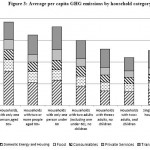Site search:
-
What’s new?
Energy for London Tags
Brent Buildings Camden Carbon Emissions CHP Cities Climate Adaptation Community Heating Community Initiatives Croydon Data DECC Decentralised Energy Distribution ECO Energy Costs Energy Efficiency Enfield FIT Fuel Poverty Funding Green Deal Hackney Haringey Housing Islington Lambeth Library Local Authorities Mayor Newham Ofgem Olympics Photovoltaics Planning RE:FIT RE:NEW Renewable Energy Retrofit Southwark Tower Hamlets Transport Waltham Forest Waste WestminsterEnergy Archives:
- February 2021 (1)
- January 2021 (15)
- December 2020 (15)
- November 2020 (9)
- October 2020 (3)
- August 2020 (5)
- July 2020 (3)
- June 2020 (4)
- April 2020 (10)
- March 2020 (5)
- February 2020 (2)
- January 2020 (3)
- October 2019 (1)
- September 2019 (4)
- August 2019 (2)
- July 2019 (1)
- August 2018 (1)
- November 2016 (8)
- October 2016 (8)
- September 2016 (2)
- August 2016 (8)
- July 2016 (14)
- April 2016 (12)
- March 2016 (16)
- February 2016 (8)
- January 2016 (4)
- December 2015 (1)
- November 2015 (1)
- October 2015 (16)
- September 2015 (3)
- June 2015 (1)
- May 2015 (1)
- April 2015 (1)
- March 2015 (1)
- February 2015 (1)
- January 2015 (1)
- December 2014 (18)
- November 2014 (4)
- August 2014 (8)
- July 2014 (7)
- June 2014 (25)
- May 2014 (8)
- April 2014 (4)
- March 2014 (12)
- February 2014 (7)
- January 2014 (13)
- December 2013 (11)
- November 2013 (15)
- October 2013 (15)
- September 2013 (18)
- August 2013 (5)
- July 2013 (20)
- June 2013 (33)
- May 2013 (8)
- April 2013 (16)
- March 2013 (25)
- February 2013 (14)
- January 2013 (20)
- December 2012 (23)
- November 2012 (23)
- October 2012 (25)
- September 2012 (14)
- July 2012 (12)
- June 2012 (43)
- May 2012 (20)
- April 2012 (8)
- March 2012 (40)
- February 2012 (39)
- January 2012 (40)
- December 2011 (22)
- November 2011 (40)
- October 2011 (33)
- September 2011 (48)
- August 2011 (40)
- July 2011 (58)
- June 2011 (41)
- May 2011 (80)
- April 2011 (38)
- March 2011 (33)
- February 2011 (25)
- January 2011 (24)
- December 2010 (3)
- November 2010 (7)
- October 2010 (6)
- September 2010 (7)
- August 2010 (1)
- July 2010 (2)
- June 2010 (4)
- May 2010 (1)
- March 2010 (3)
- February 2010 (3)
- December 2009 (5)
- November 2009 (2)
- October 2009 (3)
- July 2009 (3)
- June 2009 (1)
- April 2009 (1)
- March 2009 (1)
- February 2009 (1)
- January 2009 (1)
- December 2008 (2)
- October 2008 (1)
- September 2008 (1)
- July 2008 (1)
- March 2008 (2)
- January 2008 (2)
- October 2007 (1)
- September 2007 (3)
- July 2007 (1)
- March 2007 (1)
- February 2007 (3)
- November 2006 (3)
- August 2006 (1)
- February 2006 (1)
- May 2005 (1)
- February 2004 (1)
Monthly Archives: July 2011
Energy Consumption in London’s Homes
29 July 2011: DECC’s latest Energy Consumption in the UK release includes data and factsheets on the use of energy in the industrial, transport, domestic and service sectors. Some of the findings from the domestic sector factsheet include:
- In 2010 domestic consumption was 32 per cent of total UK final energy consumption
- The majority of energy consumed in the domestic sector is for spacing heating which in 2009 represented 61 per cent of total domestic consumption.
- Water heating and lighting appliances accounted for a further 18 per cent each with cooking accounting for a further 3 per cent
- Electricity consumption for lighting purposes represented 33 per cent of electricity consumption by household domestic appliances, followed by cooking (32 per cent) and cold appliances (14 per cent)
No other official data providing a breakdown to this level of energy consumption in homes exists. No regional breakdown is provided or breakdown by dwelling type, hence this is the best available dataset to use in relation to energy consumption in Londoners’ homes. See the following Ofgem factsheet for information on typical total domestic energy consumption.
Recycling Cooking Oil in London
July 2011: The Committee on Climate Change are currently undertaking a review of bioenergy and took a trip to have a look at the work of Uptown Oil who collect used cooking oil from about a thousand sources in London – including Young’s pubs, Selfridges and Hackney Borough Council – to produce biodiesel.
A Business Green article published last week highlighted that Carluccio’s Restaurant chain – which has around 20 cafes in London – announced that it has signed a deal with biofuel firm Convert2Green to be converted into biofuel. Other biofuel suppliers in London include:
Uptown Oil based in Borough
Pure Fuels based in Edmonton
Proper Oils who work with a Croydon Council collection scheme
Uptown have also been selected to supply biofuel to PWC’s new HQ whose energy will be partially supplied by a trigeneration scheme (combined heat and power with cooling) – one of London’s only biofuelled CHP schemes.
Figures for the amount of cooking oil collected in London and be turned into biofuel do not appear to be available, however, a study reported on by the London Assembly in 2009 indicated that 37,000 tonnes of used cooking oil is available in London and the DfT’s latest biofuel statistics state that the “largest single feedstock for UK biofuel was used cooking oil (314m litres, 26% of total biofuel supplied)“. London’s Draft Waste Municipal Waste Strategy commits that the “Mayor will, through his Food to Fuel Alliance, aim to catalyse at least five exemplar food waste projects in London…the Alliance will support food waste projects that generate renewable heat and power (including transport fuel), and compost material for local use.”
Posted in News, Renewable Energy
Tagged Biofuels, Croydon, Enfield, Renewable Energy, Southwark, Waste
Leave a comment
Nuclear Trains Stopped for Olympics
28 July 2011: An interesting issue which hasn’t been raised for some time: “Trains carrying highly radioactive nuclear waste which normally pass through the Olympic Park are to be suspended for the duration of the Olympics. The operator of the trains, Direct Rail Services – a company wholly owned by the Nuclear Decommissioning Authority – has claimed the the suspension is not security-related but to free up track space. The spent nuclear fuel rods, sent from the Sizewell B plant in Suffolk to Sellafield are routed across the North London Line of the London Overground, passing through Stratford, Hackney, Islington and Camden on their way to the West Coast Main Line at Willesden Junction.” Read the full article here.
First Accredited Passivhaus In London
July 2011: A timber framed, two bedroom house in Camden has become the first certified Passivhaus in London, setting a benchmark for energy efficient design for the city. Read the full Green Building Press article here.
Posted in Energy Efficiency, News
Tagged Camden, Energy Efficiency, Housing, Passivhaus
Leave a comment
‘Smart’ London street lights to save power
27 July 2011: Street lights that can be dimmed to conserve power are to be used across central London to cut energy bills and lower carbon emissions. More than 14,000 lights will be converted as part of Westminster City Council’s Smart Lights project.
Posted in Energy Efficiency, News
Tagged Energy Efficiency, Street Lighting, Westminster
Leave a comment
Royal Marsden CHP
27 July 2011: The Royal Marsden Hospital in Sutton has announced that it will be installing a Combined Heat and Power plant (CHP) on site. The capacity of the gas-fired CHP unit isn’t given, but further information on the project is provided on the following press release from MITIE, the engineering company leading the development.
Posted in Decentralised Energy, News
Tagged CHP, Decentralised Energy, Hospitals, Sutton
Leave a comment
Indirect emissions from UK households
 July 2011: New Economics Foundation research paper- The distribution of total greenhouse gas emissions by households in the UK, and some implications for social policy which looks at – for the first time – indirect household greenhouse emissions embodied in the consumption of food, consumer goods and services, including imports. No regional breakdown emissions outputs for London, but still useful analysis on an area which will be increasingly studied.
July 2011: New Economics Foundation research paper- The distribution of total greenhouse gas emissions by households in the UK, and some implications for social policy which looks at – for the first time – indirect household greenhouse emissions embodied in the consumption of food, consumer goods and services, including imports. No regional breakdown emissions outputs for London, but still useful analysis on an area which will be increasingly studied.
London Plan Energy & Climate Policies
 26 July 2011: After close to two years of consultation, London’s new spatial strategy has been published by the Mayor. The London Plan forms part of the development plan for Greater London and London boroughs’ local plans need to be in general conformity with the London Plan. Its policies guide decisions on planning applications for new developments and strategies by councils and the Mayor. Chapter 5 of the strategy focuses on London’s response to climate change and building on previous versions of the London Plan (2004 and 2008), which achieved a significant impact on the carbon efficiency of new development, the new London Plan sets out a number of requirements. These include:
26 July 2011: After close to two years of consultation, London’s new spatial strategy has been published by the Mayor. The London Plan forms part of the development plan for Greater London and London boroughs’ local plans need to be in general conformity with the London Plan. Its policies guide decisions on planning applications for new developments and strategies by councils and the Mayor. Chapter 5 of the strategy focuses on London’s response to climate change and building on previous versions of the London Plan (2004 and 2008), which achieved a significant impact on the carbon efficiency of new development, the new London Plan sets out a number of requirements. These include:
- CO2 savings of 25 per cent more than national building requirements at a minimum on all new developments
- As previously, all major development should provide detailed energy assessments on how these emission savings are to be made
- In contrast to the Government’s recent climb-down in its definition of ‘zero carbon’, London Plan Policy 5.2Da requires energy assessments to include separate details of unregulated emissions and proposals for how these emissions are to be reduced
- When preparing LDFs boroughs should identify opportunities for reducing CO2 emissions from the existing building stock, and also identify and establish decentralised energy network opportunities.
- With the aid of the London Heat Map, boroughs should develop energy master plans for specific decentralised energy opportunities.
Further policy requirements for decentralised energy systems, renewable and innovative energy technologies and the overheating and cooling of buildings are also set out in the Plan.
Posted in Decentralised Energy, Library, News
Tagged Decentralised Energy, London Plan, Mayor, Planning
Leave a comment
The 10 Pillars of Local Energy Security
 July 2011: A new paper from the Local Government Information Unit (LGIU) which, in the light of the Government’s recent announcements on electricity market reform, proposes that the main responsibility for leaders in councils now is local energy security. Communities, businesses and the council itself need energy to function and the supply should be reliable and sustainable. The right energy in the right place, now and in the future.
July 2011: A new paper from the Local Government Information Unit (LGIU) which, in the light of the Government’s recent announcements on electricity market reform, proposes that the main responsibility for leaders in councils now is local energy security. Communities, businesses and the council itself need energy to function and the supply should be reliable and sustainable. The right energy in the right place, now and in the future.
Posted in Library, News
Tagged Energy Saving Trust, Energy Security, Local Authorities
Leave a comment
New National Planning Policy Framework
26 July 2011: As written about previously, Government yesterday released a draft of its new National Planning Policy Framework (NPPF). This, the Government says, presents a “new, simpler framework for the planning system that safeguards the environment while meeting the need for sustainable growth… replacing the current suite of national Planning Policy Statements, Planning Policy Guidance notes and some circulars …to just 52 pages of policy…and is a key part of reforms to make the planning system less complex and more accessible, and to promote sustainable growth.”
The Government’s previous detailed guidance document has now been replaced by two paras (152 and 153). The NPPF states that: “… local planning authorities should …recognise the responsibility on all communities to contribute to energy generation from renewable or low-carbon sources… consider identifying suitable areas for renewable and low-carbon energy sources, and supporting infrastructure, where this would help secure the development of such sources… identify opportunities where development can draw its energy supply from decentralised, renewable or low carbon energy supply systems and for co-locating potential heat customers and suppliers. “
This is a draft NPPF, and a series of questions on the proposals set out in it are in the accompanying consultation document, including six specific questions on energy (14c-f, and QB 4,5). The deadline for responses is 17 October 2011. A consultation workshop in London is to be held on 7 September 2011. Further details are in:
CLG’s press release, a NPPF summary, the Draft NPPF, and the
NPPF Consultation document, and finally the
NPPF Impact assessment.
The Big Switch
25 July 2011: London Assembly member Mike Tuffrey outlines his new initiative launched today to convert London’s buses, taxis and light goods vehicles to electric power by 2020.

